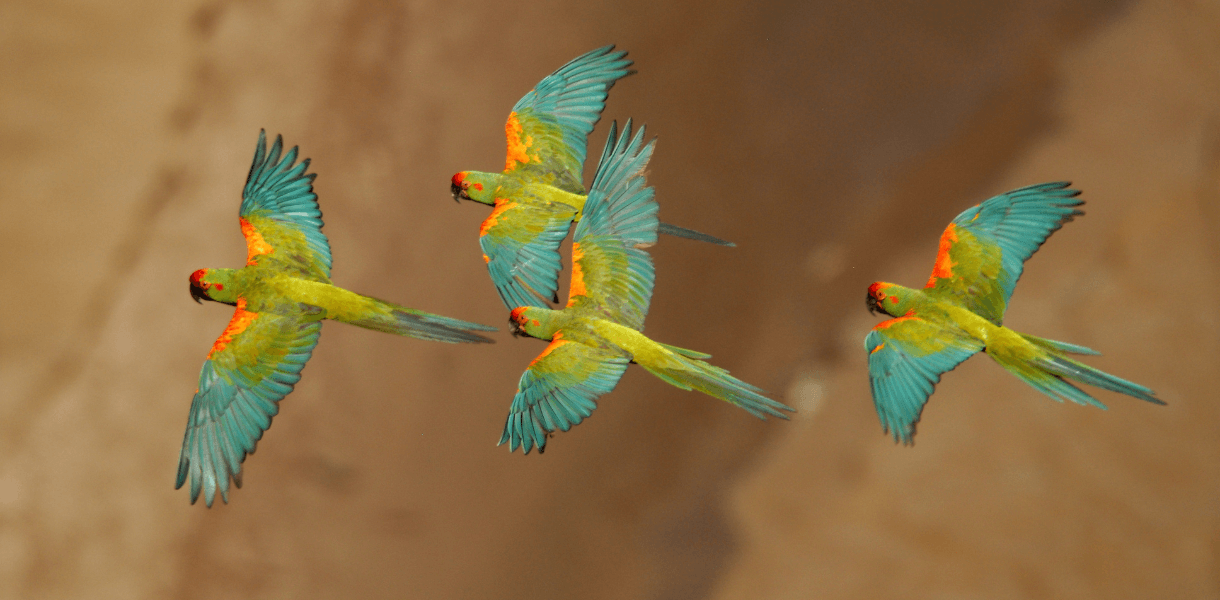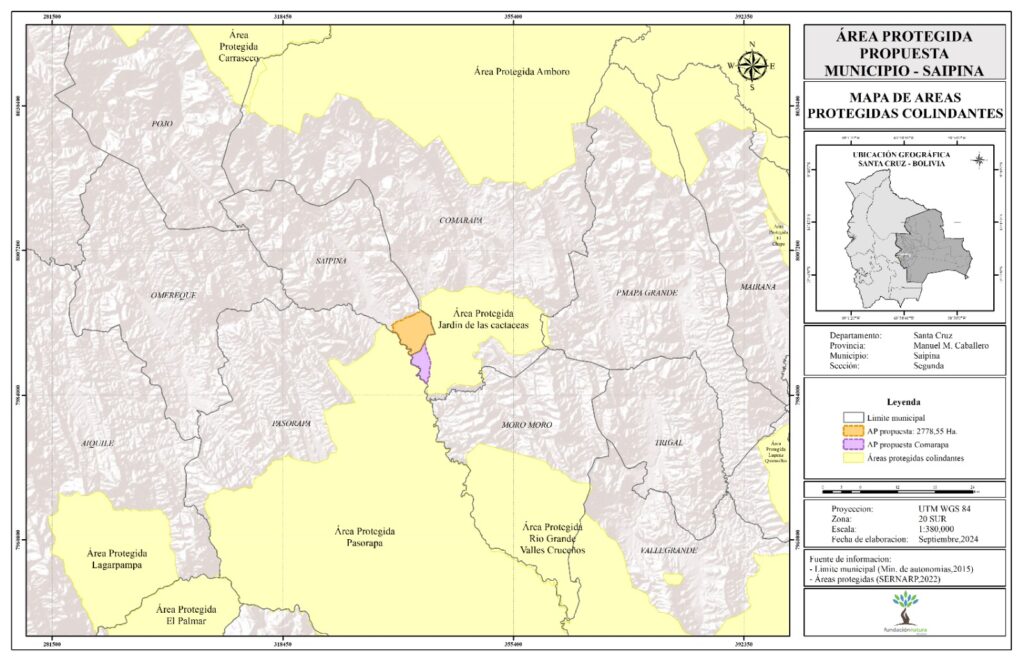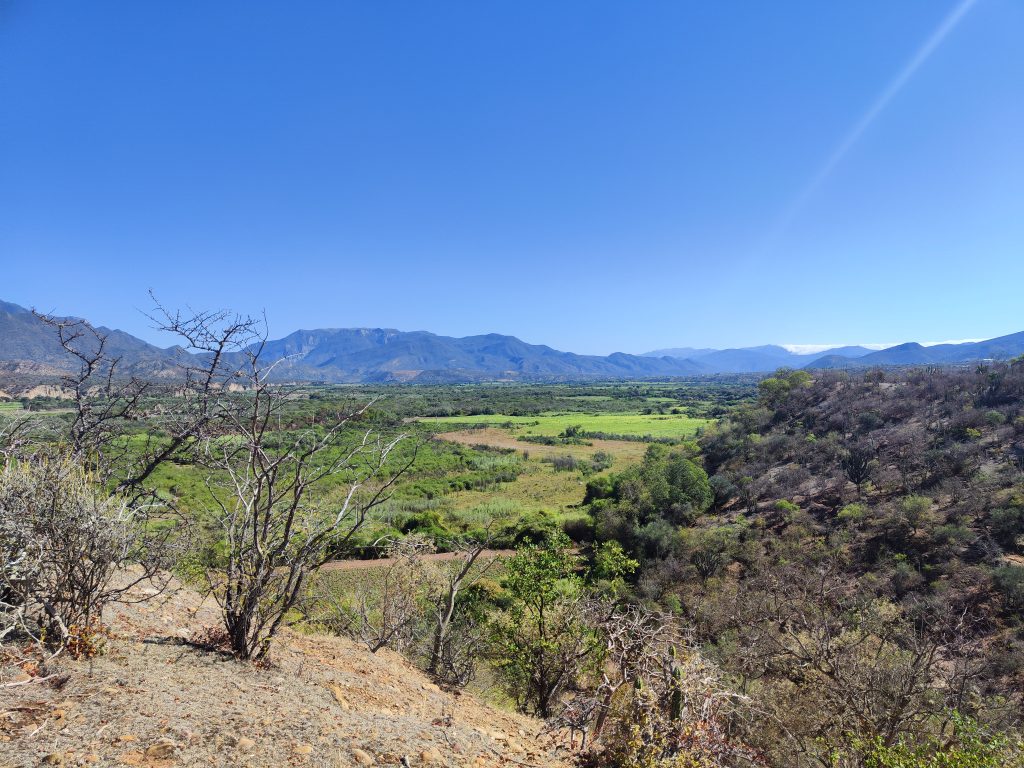Two new municipal protected areas have been created in Bolivia: the Saipina–Red-fronted Macaw Wildlife Reserve (6,864 acres) and the Comarapa–Red-fronted Macaw Wildlife Reserve (2,666 acres), with a total of 9,530 acres that directly benefit local communities and ensure the conservation of the Red-fronted Macaw (Ara rubrogenys), an endemic and Critically Endangered species.

Credit: Steffen Reichel, Asociación Armonía.
A flock of Red-fronted Macaws in flight. Photo by Steffen Reichel, Asociación Armonía. This is a bird species endemic to Bolivia and critically endangered.
Two new municipal protected areas have been created in Bolivia: the Saipina–Red-fronted Macaw Wildlife Reserve (6,864 acres) and the Comarapa–Red-fronted Macaw Wildlife Reserve (2,666 acres), with a total of 9,530 acres that directly benefit local communities and ensure the conservation of the Red-fronted Macaw (Ara rubrogenys), an endemic and Critically Endangered species.

The process of creating these reserves is led by American Bird Conservancy (ABC) and Conserva Aves partner Natura Bolivia, and has the active commitment of more than 50 local actors from the communities of Anamal, La Junta, and La Estancia in the department of Santa Cruz, who have committed to protecting the macaw and its habitat.
Saipina and Comarapa are the first reserves officially declared as Wildlife Reserves in Bolivia under Conserva Aves. Conserva Aves is a hemispheric conservation initiative led by ABC, Audubon, BirdLife International, Birds Canada, and the Network of Environmental Funds of Latin America and the Caribbean (RedLAC), with support from the Bezos Earth Fund, as well as additional funding from the Bobolink Foundation for the designation of these areas. The initiative is supporting several organizations in the creation of multiple subnational protected areas in Bolivia through calls for proposals and direct investments.
The reserves strengthen the biological corridor of the Inter-Andean Dry Valleys, connecting other key areas, such as the Pasorapa Integrated Natural Management Area (ANMI in Spanish), the Lagarpampa – Mollepampa ANMI in Cochabamba, the El Palmar ANMI in Chuquisaca, the Municipal Protected Area Jardín de Cactáceas de Bolivia, and the Río Grande – Valles Cruceños ANMI.
This conservation network connects habitats essential for the region’s biodiversity and mitigates forest loss caused by agricultural expansion, grazing, and deforestation by establishing a legal framework for the conservation and sustainable management of the territory. At the same time, they protect other important species, such as the Andean Condor (Vultur gryphus), classified as Vulnerable, and the Cliff Parakeet (Myiopsitta luchsi), an endemic species with restricted distribution.

In 2021, Natura Bolivia and Asociación Armonía, another ally of ABC and Conserva Aves, promoted a national census of the macaw that established that the global population of the species is 1,160. During this census, nesting areas were located that were crucial for the location of the new reserves.
The Red-fronted Macaw is one of ABC’s priority species, and for nearly two decades it has been supporting various projects to conserve its habitat, including the creation of the ANMI Pasorapa and Lagarpampa and support for infrastructure and management of the Red-fronted Macaw Reserve managed by Asociación Armonía. ABC is also supporting Natura Bolivia and the municipalities involved, both in the Comarapa and Saipina reserves, as well as the AMNI Pasorapa and Lagarpampa, to strengthen operations and technical capacities through the Latin American Reserve Stewardship Initiative, funded by March Conservation Fund.
The reserves promote local development through mechanisms such as Reciprocal Biodiversity Agreements (ARA), a Natura Bolivia program that encourages the conservation of the species and its habitat, promoting community participation through benefits such as irrigation systems, access to water, and sustainable production systems. In addition, the municipal governments of Saipina and Comarapa, as the main parties responsible for safeguarding natural resources and biodiversity, also contribute to environmental conservation and education, ensuring ecological balance and controlling environmental pollution. These initiatives open up opportunities for ecotourism, highlighting the natural attractions of the region and generating income for local communities.
